Ocean Plastic Has Potentially Disastrous Effects on Marine Species
The mountains of plastic waste not only have plagued the earth but the oceans as well. Plastic pollution has made its way into the oceans and is undoubtedly impacting marine life. Scientists have been trying to understand the extent of these potentially disastrous impacts. Undoubtedly, the effects of ocean plastic on marine species have been devastating, while it also threatens all ecosystems.
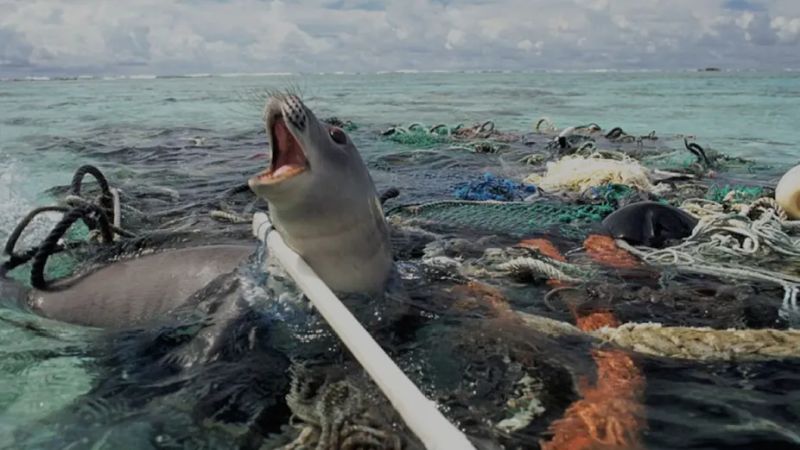
Effects of ocean plastic on marine species could be fatal | Image: The Conversation
Scientists have discovered the highest levels of microplastics ever recorded on the seafloor. As part of an international research project led by the University of Manchester, scientists were able to uncover a staggering 1.9 million pieces of microplastics in a single square-meter of the ocean’s floor in the Mediterranean.
Effects of Ocean Plastic on Marine Species
In a study, published in the journal “Science”, the researchers showed how deep-sea currents act as conveyor belts to transport and deposit tiny plastic fragments and fibers across the seabed.
A staggering number of animals die as a result of plastic pollution in the marine environment. Marine plastic pollution has affected over 267 species worldwide as a result of ingestion, starvation, suffocation, infection, drowning, and entanglement.
50 to 80 percent of all sea turtles found dead have ingested some form of plastic. Seabirds are beginning to unintentionally feed their chicks plastic, mistaking it for food, and one study found that 98 percent of the chicks sampled had ingested some form of plastic.
Hermit Crabs
A new study has revealed what this pollution might mean for hermit crabs, with an environment rich in microplastics seeming to affect their cognitive performance when selecting a home.
The study was carried out by scientists at Belfast’s Queen’s University together with researchers from Liverpool John Moores University, who set out to explore the impacts of plastic pollution on hermit crabs.
A total of 64 female common European hermit crabs were recruited for the experiment, with around half placed in a tank containing small microplastic fragments, and the other half in uncontaminated water.
In doing so, the team wanted to find out whether the plastic pollution impacted key survival tactic in hermit crabs, an ability to investigate and inhabit larger, superior shells as they grow larger and wiser.
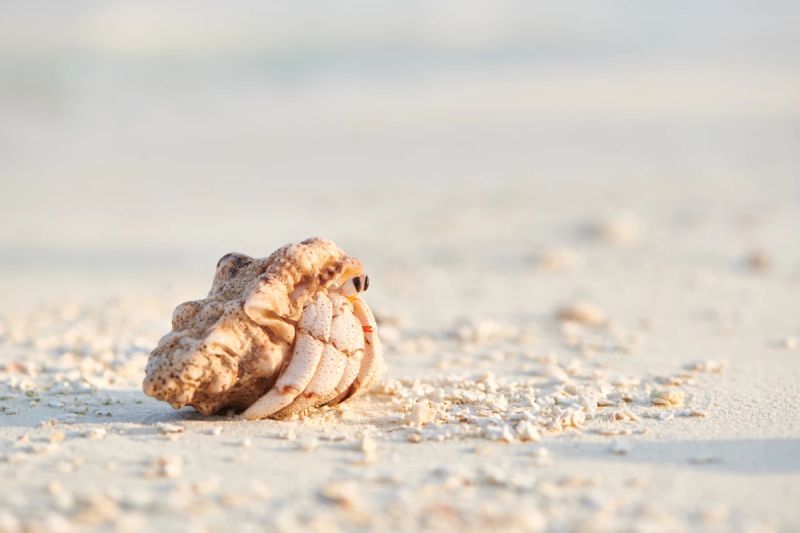
The impact of plastic pollution on hermit crabs could result in impaired cognitive ability | Image: Haveseen/Depositphotos
The results suggest that the microplastic-rich environment had impaired their cognition and by extension, their ability to carry out an essential survival behavior. Microplastics had a detrimental effect on shell selection behavior in hermit crabs. As this trait is vital for hermit crab survival and reproduction, there could be important long-term consequences.
Sea Turtles
Recently, a study revealed that sea turtles mistake the plastic debris for food and its consumption may obstruct the turtle’s digestive system and can lead to death.
Another study conducted in 2013 found that close to 50 percent of sea turtles had swallowed plastics that contributed to their deaths.
Whale and Fish
There are several accounts of various whale species found dead after plastic consumption, such as in 2002 when a Minke whale was found with 800 kg of plastic bags in its stomach or in 2004 when a Cuvier’s Beaked whale was found with tightly packed black plastic bags blocking the entrance to its stomach.
Research conducted by the University of Exeter in the United Kingdom suggests that it is more difficult for an animal to get rid of waste captured in their gills, compared to items taken in by mouth. Chronic exposure to microplastic fibers causes aneurysms, erosion of surface layers and other serious damage to fish gills.
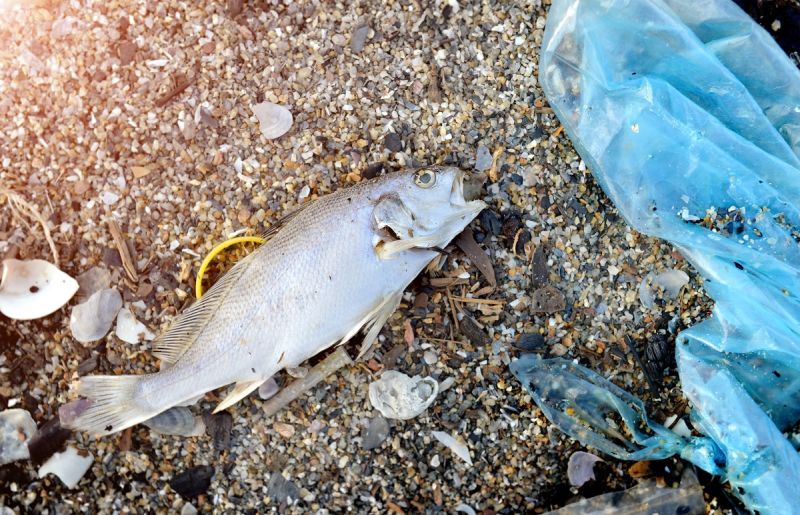
Many fishes washout on the seashores after dying of ingestion of ocean plastic | Image: The Pegasus Foundation
Moreover, the severe impacts of plastic pollution in various species of fish, spillover to humans because of their seafood consumption. Several research studies have found microfibers from plastic in that species that are commonly eaten by humans, including perch, brown trout, and Cisco. Plastic pollution in marine life ultimately affects every link in the food chain.
Around 12,000 to 24,000 tons of plastic waste ends up inside fish in the North Pacific Ocean alone. In all, the debris affected 9 percent of the fish in the North Pacific.
Also Read: Link Between Size of Ocean Plastic and its Consumption by Marine Animals
Many other marine animals may mistakenly consume plastic waste. Given the enormous size of some whales’ mouths, they may ingest plastic debris along with the fish they are engulfing in the water column. Postmortem examinations of some whales have found large amounts of plastic waste in their digestive system.
Plastic pollution has adversely affected a number of species of cetaceans. Obstructions may block or injure their stomachs, which can lead to starvation and death.
A study in the journal Marine Pollution Bulletin concluded that over half of cetaceans have swallowed plastics with up to twenty-two percent of these animals also at risk of losing their lives as a result of plastic pollution.
Sea Lions and Seals
Plastic debris such as fishing lines, lures, and nets can entangle sea lions and seals. Plastic packing bands and bags can not only entrap seals and sea lions but lead to injury and even death.
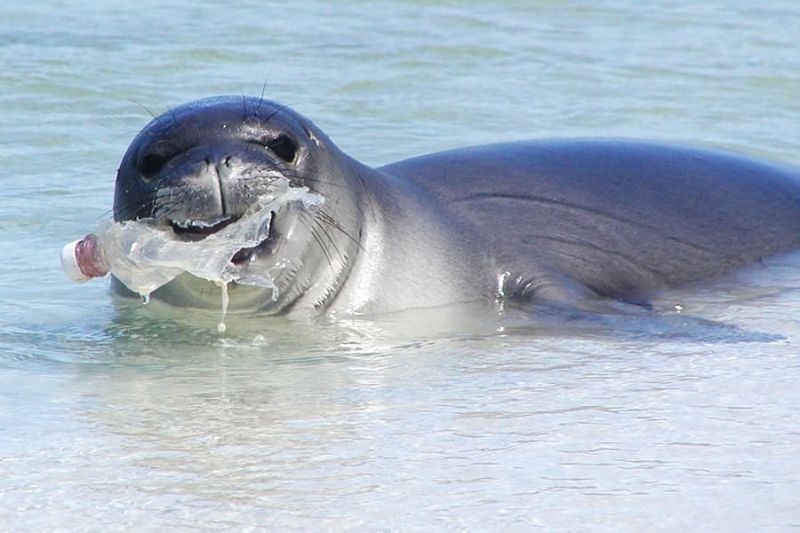
Consumption of plastic can have harmful effects on sea lions and seals | Image: CNN
Rubber and plastic packing bands affect Steller Sea Lions even in remote areas. After eight years of monitoring in British Columbia and Southeast Alaska, one study found plastic debris had entrapped 388 sea lions. Entanglements can be immediately fatal or cause prolonged suffering.
Seabirds
Marine debris injures or kills countless sea birds every year. One study found up to 90% of marine birds have ingested plastic debris at least once in their lives.
One of the most affected species is the Laysan albatross. Studies have estimated that up to 98 percent of Laysan albatross have swallowed plastic debris, which can obstruct their digestive systems.
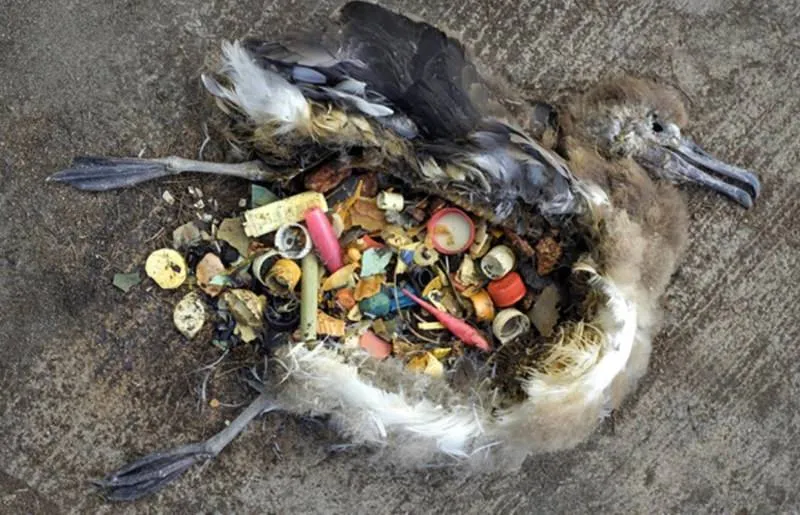
Plastic waste found inside a dead seabird | Image: Twitter
They may encounter plastics while feeding as they plunge dive into the ocean to catch fish, squid, and other food. Other seabird species may skim the water surface using their beaks as scoops, picking plastic waste along the way.
Caddis Fly
Not only the bigger animals, but the small organisms are also getting adversely affected by the ocean plastic. The insect species are critical part of ecosystems as they fulfill an important task hoovering up aquatic vegetation, keeping a river from getting overgrown. As flying adults, they serve as a critical food source for frogs, bats and spiders.
Anyhow, in their aquatic habitat, the larvae of caddis fly gather up sand grains and other sediment and paste them together with silk to form a cone that holds their worm-like bodies, while protecting them from predators. Given the plastic pollution, they are suffering a perpetual housing crisis.
In a study published last year, researchers in Germany reported finding microplastic particles in the cases of caddis flies in the wild. The unnerving results of lab experiments revealed that the more microplastic particles a caddis fly larva incorporates into its case, the weaker that structure becomes. That could open up caddis flies to greater predation, sending ripple effects through river ecosystems.
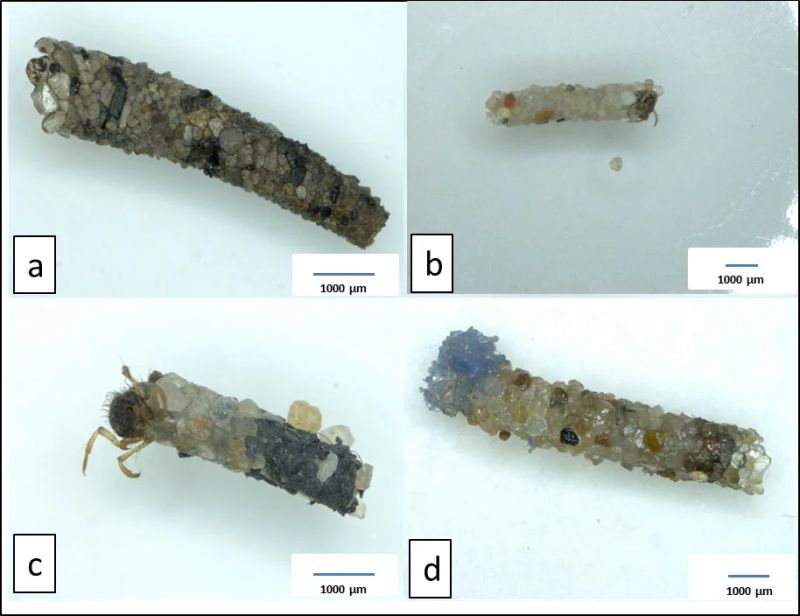
Some examples of caddis fly cases. Image A was collected from the wild, and B was built from sand by a larva in the lab. In image C, the larva has incorporated black PVC particles. And in D, it’s blue PET particles | Image: Tamara Al Najjar
As they mature and elongate, they have to continuously add material to the case or at least until they turn into an adult insect. If the caddis fly larva somehow loses its case, it’s got to start from scratch, and that’s quite the precarious situation for a defenseless, immature larva.
Plastic pollution also harmfully impacts pelicans, gulls, and other marine birds which may mistake plastics for food or find themselves entangled as they dive or fish beneath the surface.
The effects of ocean plastic on marine species have been devastating for the entire ecosystem with many deaths and injuries to various animals.


